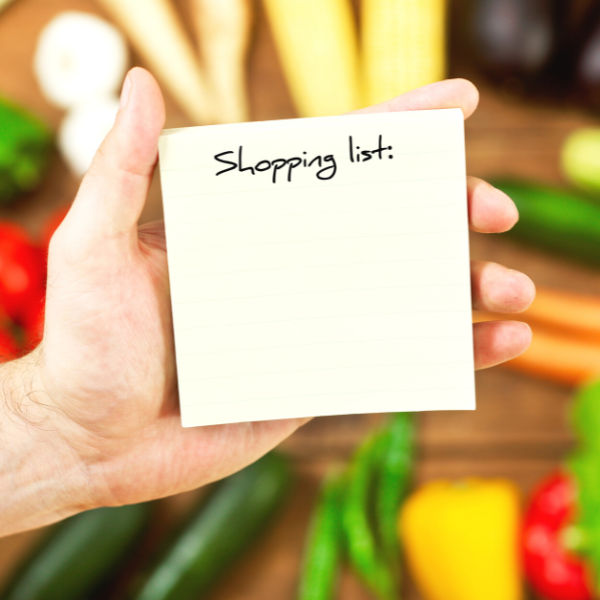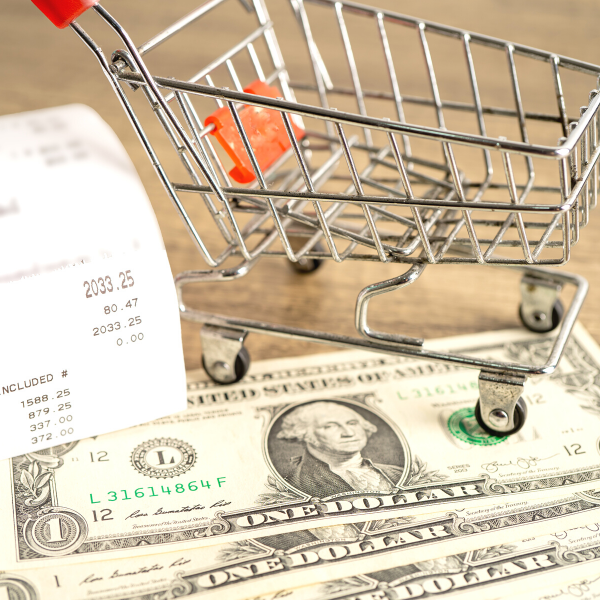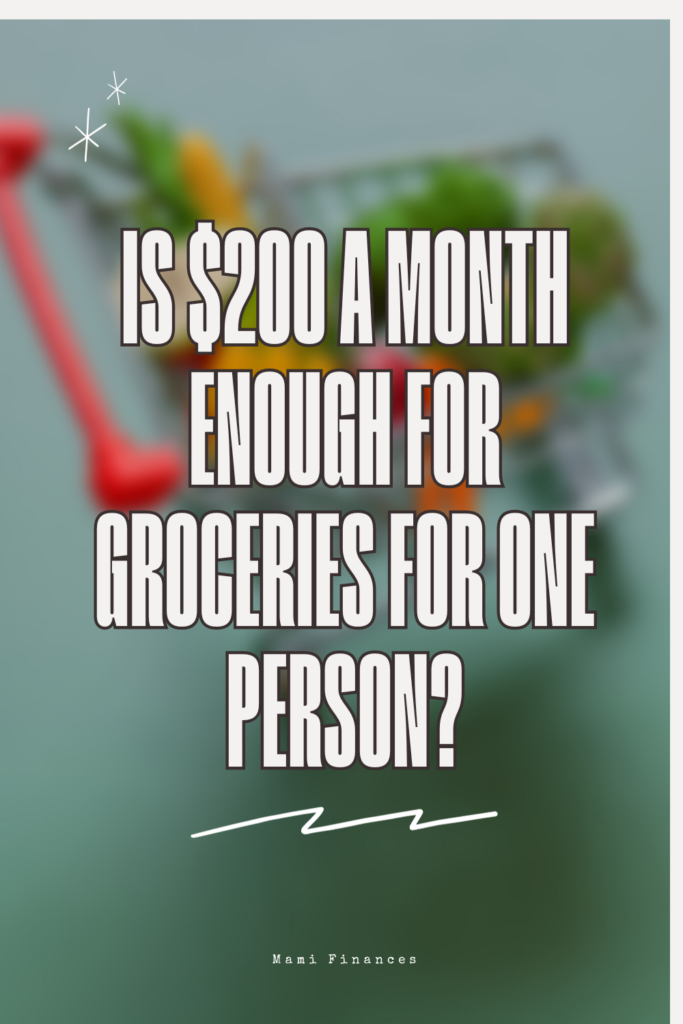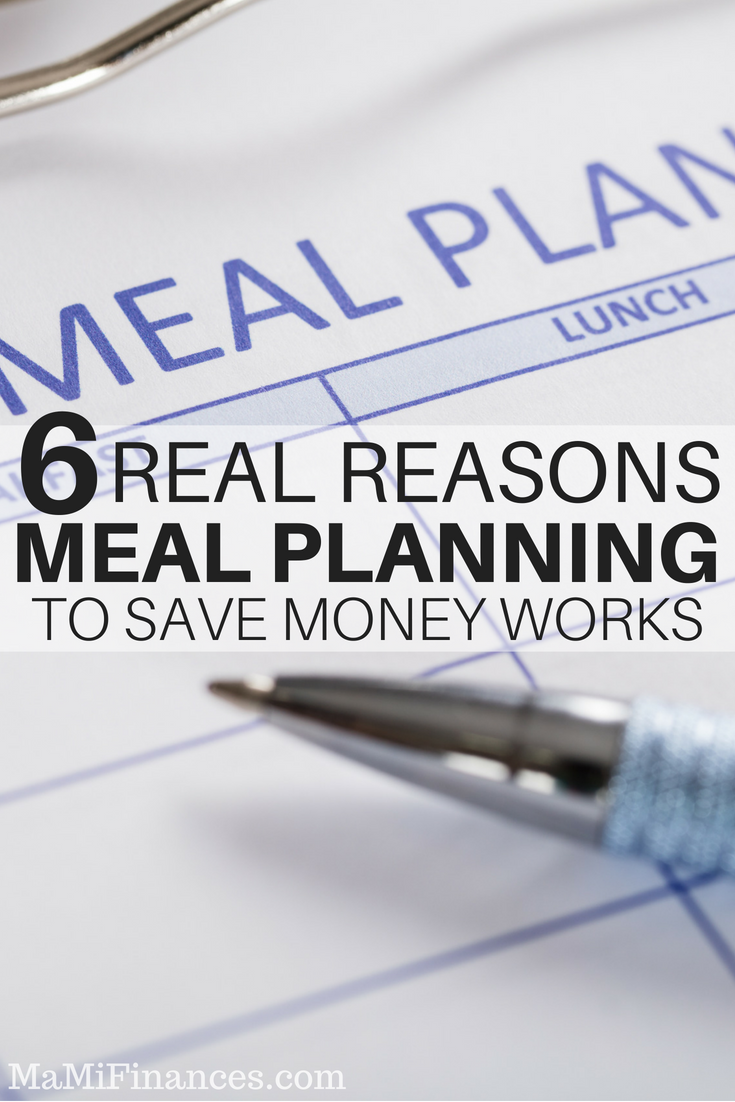Is $200 a Month Enough for Groceries for One Person?
In today's fast-paced world, managing a budget for groceries can be a challenge, especially for individuals living alone. One common question that arises is whether $200 a month is enough to cover a single person's grocery expenses. With the constant rise in food prices, it is crucial to explore various factors and strategies to make the most out of this budget.
This article aims to delve into the topic by examining the importance of grocery budgeting, considering personal preferences and dietary restrictions, and providing practical tips for effective meal planning and shopping on a limited budget.
Also, alternative food sources and ways to adjust and adapt the grocery budget will be explored. Let's dive in and discover how one can navigate a budgeted grocery shopping experience while still maintaining a balanced diet and maximizing savings.

The $200 Monthly Grocery Budget for One Person: Is it Enough?
When budgeting for groceries, many people wonder if a $200 monthly budget is sufficient for one person. With the rising cost of living and increasing food prices, it's natural to question if this amount is realistic.
While $200 may seem restrictive, it can be made work with careful planning and smart shopping strategies. Individuals can stretch their budget and maintain a healthy and satisfying diet by prioritizing essential items, planning meals, and taking advantage of money-saving tactics like coupons and shopping in bulk.
You might enjoy these posts:
Budgeting for Groceries
Budgeting for groceries is a crucial aspect of managing one's finances. It allows individuals to have better control over their spending and ensures that they allocate a specific amount for their food needs. By setting a grocery budget, people can avoid overspending and falling into the trap of impulse purchases.
Also, budgeting helps individuals prioritize their expenses and make conscious choices regarding what they buy. It also promotes healthier eating habits as individuals can plan and prepare nutritious meals within their budget constraints. Budgeting for groceries is essential for financial stability and making informed decisions about food purchases.

Factors to Consider
When determining whether $200 a month is enough for groceries for one person, there are several factors to consider. First and foremost, it is important to consider one's income and expenses. Everyone's financial situation is unique, and what may be affordable for one person may not be feasible for another.
Personal food preferences and dietary restrictions play a role in determining the appropriate grocery budget. Some individuals may require specialized or more expensive foods, which can impact the overall cost of groceries. Considering these factors, one can better assess if $200 a month is enough for their grocery needs.
Income and Expenses:
Determining the appropriate grocery budget for an individual involves considering their income and expenses. Evaluating how much money is available each month to allocate towards groceries is important after accounting for other necessary expenses such as rent, utilities, transportation, and healthcare.
This analysis allows individuals to determine an appropriate and realistic amount that can be dedicated to purchasing food. By assessing their financial situation, individuals can ensure that their grocery budget is feasible and aligns with their overall monthly spending plan.
Personal Food Preferences and Dietary Restrictions
Personal food preferences and dietary restrictions play a significant role when budgeting for groceries. Each individual has their own unique tastes and nutritional needs, which can affect how they allocate their grocery budget. For someone with dietary restrictions, such as gluten intolerance or lactose intolerance, specialty products may be necessary, which can be more expensive.
On the other hand, individuals with specific food preferences, such as vegetarian or vegan diets, may require additional planning and research to ensure they are getting all the necessary nutrients within their budget constraints. It is important to consider these factors when creating a grocery budget to ensure that it aligns with financial goals and personal health requirements.

Planning and Preparation
Planning and preparation are crucial in successfully managing one person's $200 monthly grocery budget. A weekly meal plan outlining breakfast, lunch, dinner, and snacks is essential. Individuals can make a detailed shopping list and avoid impulse purchases by planning meals in advance. Moreover, planning meals allows for better utilization of ingredients and minimizes food waste.
Preparing meals at home also helps save money compared to eating out regularly. Individuals can effectively stick to their budget without compromising nutrition or taste by dedicating time to planning and preparing meals.
Creating a Weekly Meal Plan on a $200 Budget
To effectively manage a $200 grocery budget for one person, it is crucial to create a weekly meal plan. By planning your meals in advance, you can better allocate your funds and ensure that you have enough food to last throughout the week.
Start by considering your dietary needs and preferences. Look for affordable and versatile ingredients that can be used in multiple meals. Incorporate a variety of grains, proteins, fruits, and vegetables to ensure a balanced diet.
Next, make a list of recipes or meal ideas for each day of the week. Consider utilizing leftovers in different ways to minimize waste and stretch your budget further. Take advantage of affordable staples such as beans, rice, and pasta that can be combined with inexpensive vegetables to create filling meals.
When creating your meal plan, consider the cost of each ingredient and try to choose items that are on sale or available at a lower price. Taking advantage of discounts and promotions can significantly reduce your grocery expenses.
Lastly, make sure to check your pantry and fridge before making a shopping list. Utilize any ingredients you already have on hand to avoid unnecessary purchases. Stick to your meal plan as much as possible to prevent impulse buying or ordering takeout.
Creating a weekly meal plan within a $200 budget requires careful planning and smart decision-making. By being intentional with your food choices and utilizing affordable ingredients, you can successfully stick to your budget while still enjoying nutritious and delicious meals throughout the week.
Strategies for Efficient Grocery Shopping
It is essential to employ strategies for efficient grocery shopping to make the most out of a $200 monthly grocery budget for one person. One effective strategy is to create a detailed shopping list before heading to the store.
This helps avoid impulsive purchases and ensures that you only buy what you need. Also, taking advantage of sales and discounts can help stretch your budget further. Prioritizing generic brands over expensive name brands can also lead to significant savings. Finally, consider shopping in bulk for non-perishable items to save money in the long run.

Smart Shopping Tips
When it comes to sticking to a $200 monthly grocery budget, smart shopping techniques can make all the difference. Here are some tips to help you make the most of your dollars at the supermarket.
First, it's important to plan ahead. Before heading to the store, create a detailed shopping list based on your weekly meal plan. Stick to this list and avoid impulse buying, as this can quickly add up and blow your budget.
Comparing prices is another key strategy. Take the time to check out different stores and compare prices on items you frequently buy. Keep an eye out for sales and promotions, as these can offer significant savings.
Buying in bulk can also be cost-effective, especially for non-perishable items or those that you use frequently. Consider purchasing larger quantities of staple products, such as rice or pasta, as they tend to have a longer shelf life and can save you money in the long run.
Also, utilizing coupons and loyalty programs can help stretch your budget even further. Keep an eye out for coupons in newspapers or online, and take advantage of any rewards programs offered by your local grocery stores.
Lastly, don't underestimate the power of meal planning. By planning your meals in advance and using ingredients you already have on hand, you can avoid food waste and save money.
By following these smart shopping tips, you can make your $200 monthly grocery budget go further without sacrificing on quality or nutrition. Remember that it takes a little extra effort and planning, but the savings will be well worth it in the end.
Shopping in Bulk: Is it Worth it?
When stretching your grocery budget, shopping in bulk can be a tempting option. But is it really worth it? Well, the answer depends on a few factors. Buying in bulk can save you money in the long run, as you can often get lower prices per unit or ounce.
However, this strategy may not be suitable for everyone. If you live alone or have limited storage space, buying in bulk may result in wasted food and money. Also, certain perishable items may not be practical to purchase in large quantities. Ultimately, the value of shopping in bulk depends on your individual circumstances and consumption habits.
Utilizing Sales and Coupons
Maximizing savings through sales and coupons can make a significant difference. Keeping an eye out for weekly sales and promotions at your local grocery store can help you save money on essential items. Also, utilizing coupons can provide even greater discounts on groceries.
Whether you clip physical coupons from newspapers or use digital coupon apps, incorporating these savings strategies into your grocery shopping routine can help stretch your $200 budget even further.
By taking advantage of sales and coupons, you can enjoy the satisfaction of knowing that you're getting the best deals while staying within your budget.

Healthy and Affordable Food Choices
It's important to prioritize healthy and affordable food choices. Making nutritious choices doesn't have to break the bank. Look for cost-effective options that still provide essential nutrients. Opt for whole grains such as brown rice and oats, which are affordable and fiber-packed.
Incorporate lean proteins like chicken, beans, and eggs into your meals. Fresh fruits and vegetables can also be affordable in season or frozen. You can maintain a balanced diet without overspending by focusing on these healthier options.
Balancing Nutrition and Cost-Effectiveness
Many people assume that eating healthy means spending more money, but this doesn't have to be the case. By making smart choices and prioritizing certain food groups, it is possible to maintain a nutritious diet without breaking the bank.
For example, focusing on affordable sources of protein such as beans, lentils, and eggs can help reduce costs while still providing essential nutrients. Also, buying frozen fruits and vegetables can be more economical than fresh produce without sacrificing nutritional value. It's all about finding a balance that works for both your health and your wallet.
Tips for Incorporating Fresh Produce on a Budget
When it comes to incorporating fresh produce into your grocery budget, there are several tips that can help you save money while still enjoying nutritious fruits and vegetables. One tip is to buy seasonal produce, as it tends to be more affordable and of better quality. Shopping at local farmer's markets or joining a community-supported agriculture (CSA) program can also provide access to fresh produce at lower prices.
Also, consider buying frozen fruits and vegetables, which are often more cost-effective and have a longer shelf life. Finally, planning your meals around the produce you have on hand can help reduce waste and make the most out of your budget. By following these tips, you can ensure that fresh produce remains a staple in your diet without breaking the bank.

Cooking and Meal Prepping
Cooking and meal prepping play a vital role in stretching your grocery budget of $200 a month. By cooking your own meals at home, you can save a significant amount of money compared to eating out or buying pre-packaged meals.
Meal prepping involves planning and preparing meals in advance, which not only saves time but also helps prevent food waste. Preparing meals in bulk and portioning them out for future consumption can be especially beneficial for single individuals, as it ensures you have nutritious meals readily available throughout the week.
Saving Money through Home Cooking
One of the most effective ways to save money on groceries is by cooking meals at home. When you prepare your own meals, you have full control over the ingredients and portion sizes, allowing you to stretch your budget further. By purchasing raw ingredients instead of pre-packaged or processed foods, you can save significant money in the long run.
Cooking at home also eliminates the need for costly dining out or takeout meals. By learning basic cooking skills and experimenting with recipes, you can create delicious and budget-friendly meals that fit within your $200 grocery budget.
Benefits of Meal Prepping for a Single Person
Meal prepping can be incredibly beneficial for a single person looking to stick to a budget and maintain a healthy lifestyle. By preparing meals in advance, individuals can save time and money while ensuring they have nutritious options readily available.
With meal prepping, it becomes easier to resist the temptation of ordering takeout or buying convenience meals that can quickly add up in cost. Also, portion control is made simpler as each meal is pre-portioned, making it easier to avoid overeating. Overall, meal prepping helps promote better eating habits and allows for greater control over one's diet.
Alternative Food Sources
When trying to stick to a $200 monthly grocery budget, it's important to consider alternative food sources that can help stretch your dollars further. Discount grocery stores and farmer's markets are great options for finding affordable produce and staple items.
These places often offer lower prices compared to traditional supermarkets. Also, exploring food assistance programs in your area can provide access to nutritious food at a reduced cost. Individuals can increase their budget and maintain a balanced diet by taking advantage of these alternative food sources.
Exploring Discount Groceries and Farmer's Markets
Exploring discount groceries and farmer's markets can be a game-changer when it comes to stretching your grocery budget. Discount grocery stores offer lower prices on various products, including canned goods, frozen foods, and pantry staples. These stores often source their products from overstocked or nearing expiration goods, allowing them to offer significant discounts.
Farmer's markets, on the other hand, provide an opportunity to buy fresh produce directly from local farmers at competitive prices. By shopping at discount groceries and farmer's markets, you can find great deals while supporting local businesses and enjoying high-quality food.
Utilizing Food Assistance Programs
For individuals struggling to make ends meet and with limited resources for groceries, one option to consider is utilizing food assistance programs. These programs, such as the Supplemental Nutrition Assistance Program (SNAP) in the United States, provide eligible individuals with financial assistance to purchase food.
Individuals can stretch their grocery budget even further by applying for and taking advantage of these programs. It's important to research and understand the requirements and benefits of these programs to determine if they are a viable option for supplementing one's grocery budget.

Adjusting and Adapting
When budgeting for groceries, it's important to be flexible and willing to adjust your spending habits. Just because you set a budget at $200 a month doesn't mean it can't change as circumstances do. As your income, expenses, and personal situation fluctuate, you may need to reevaluate and make adjustments to your grocery budget.
For example, if you find that your grocery needs have increased due to an increase in family size or dietary restrictions, you may need to allocate more money towards groceries. On the other hand, if you have successfully implemented cost-saving strategies and find that you are consistently under-spending, you may be able to reduce your budget.
It's crucial to evaluate your grocery budget and make adaptations as needed regularly. This ensures that you are meeting your nutritional needs while still staying within your financial means. Remember, the goal is to save money and maintain a balanced diet and overall well-being.
Also, there may be challenges along the way that require some creative problem-solving. Unexpected expenses or changes in income can disrupt your carefully planned budget. During these times, it is important to stay flexible and adaptable. Look for alternative food sources such as discount groceries or farmer's markets where you can find affordable options.
Adjusting and adapting are key to managing a grocery budget. Regularly evaluating and making necessary changes ensures that your budget aligns with your current needs and priorities. Every individual's situation is unique, so finding the right balance between savings and nutrition is essential.
Evaluating Your Grocery Budget and Making Adjustments
Evaluating your grocery budget and making adjustments is a crucial step in maintaining financial balance while ensuring adequate nutrition. Take the time to review your spending patterns and assess whether your current budget aligns with your needs and goals. Consider factors such as changes in income, fluctuations in food prices, and any evolving dietary requirements. By analyzing your grocery expenses regularly, you can identify areas where you may be overspending or opportunities to allocate funds more efficiently. Adjusting your budget accordingly will help you stay on track and make the most of your available resources.
Overcoming Challenges and Maintaining a Balanced Diet
Maintaining a balanced diet can be challenging when working with a limited grocery budget. However, overcoming these challenges and still prioritizing nutritious meals is possible. One strategy is incorporating affordable protein sources, such as beans, lentils, and eggs. Also, selecting whole grains like brown rice and oats can provide essential nutrients without breaking the bank.
It's also important to prioritize fruits and vegetables, opting for frozen or canned varieties when fresh options are too expensive. Proper planning and creativity make it possible to maintain a balanced diet even on a tight grocery budget.

Conclusion
While a $200 monthly grocery budget may seem like a challenge for one person, living within that constraint is possible. By carefully planning meals, making smart shopping choices, and taking advantage of discounts and food assistance programs, individuals can stretch their dollars and still maintain a balanced diet.
It may require some adjustments and creativity, but one can successfully navigate the budgeted grocery shopping experience with dedication and resourcefulness. Ultimately, the key is balancing cost-effectiveness and healthy food choices. Proper planning and preparation allow one to maximize their $200 budget and enjoy nutritious meals without breaking the bank.
Is $200 a Month Enough for Groceries? Considerations and Recommendations
There are several factors to consider when considering whether $200 a month is enough for groceries. First, assessing your personal food preferences and dietary restrictions is important. Some individuals may have higher costs due to specific dietary needs. Also, the cost of groceries may vary depending on where you live and the current prices in your area.
Planning and preparation are crucial to making the most of a $200 grocery budget. Creating a weekly meal plan can help ensure that you are making efficient use of your budget and minimizing waste. Utilizing strategies for efficient grocery shopping, such as making a list and sticking to it, can also help stretch your dollars further.
Smart shopping tips such as shopping in bulk can be beneficial, but assessing whether the savings outweigh the risk of food going to waste is important. Similarly, utilizing sales and coupons can maximize savings, but it is essential only to purchase truly needed items.
Finding a balance between nutrition and cost-effectiveness is key when making healthy and affordable food choices. Incorporating fresh produce on a budget can be achieved by buying seasonal fruits and vegetables or exploring farmer's markets for lower prices.
Cooking at home and meal prepping can save money by avoiding expensive takeout or convenience foods. Also, exploring alternative food sources like discount groceries or participating in food assistance programs may provide additional resources for managing a $200 monthly grocery budget.
Ultimately, each individual's grocery needs will vary, but with careful planning and smart shopping techniques, making a $200 per month stretch for groceries is possible. By evaluating your budget regularly and adapting as necessary, it is possible to maintain a balanced diet while staying within your means.






